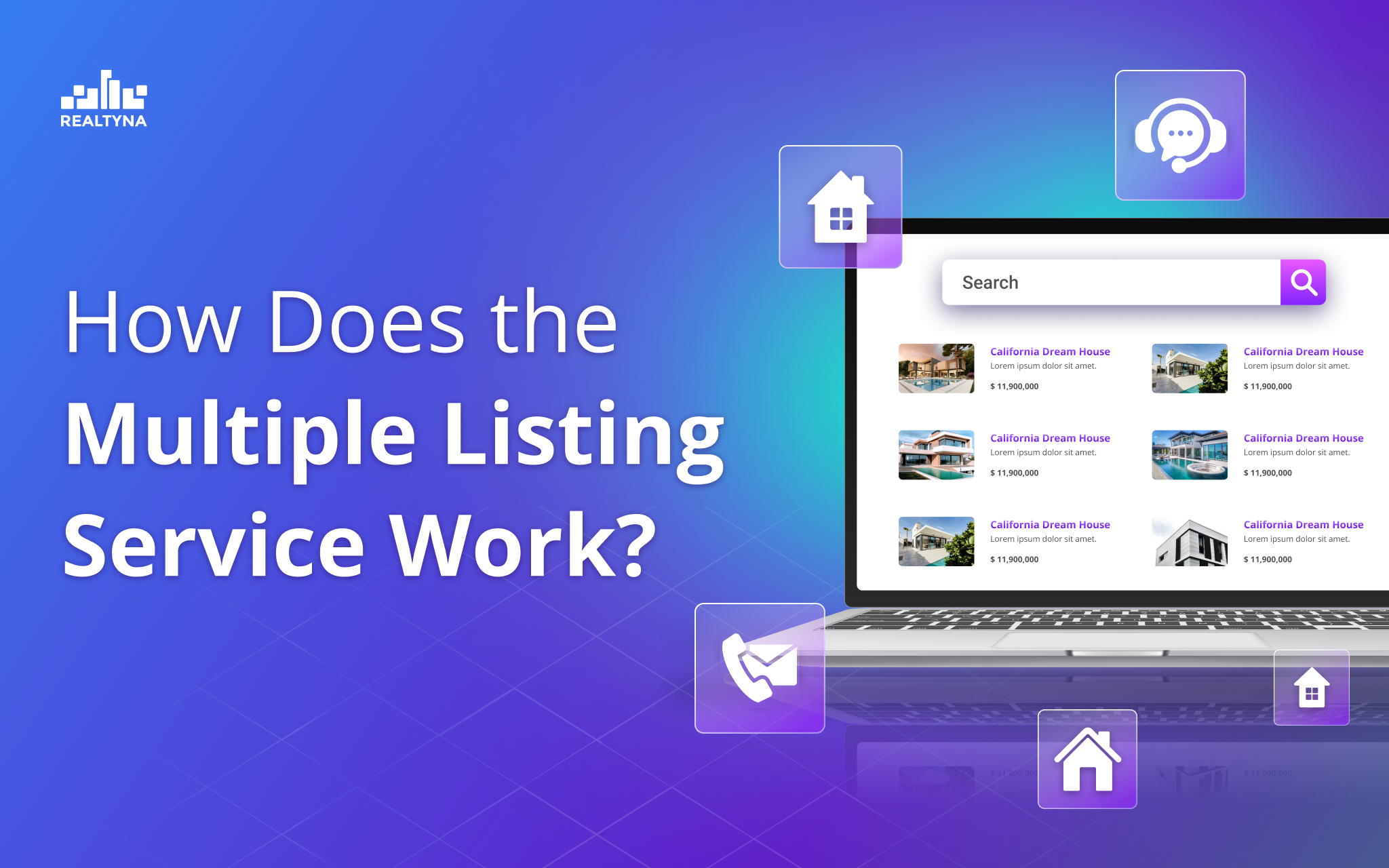
What is MLS in Real Estate? Everything you need to know
MLS stands for Multiple Listing Service, and it’s one of the most important tools real estate agents use. This comprehensive database allows agents to list properties for sale and search for available listings in their area.
An MLS subscription gives you access to detailed listing information, photos, stats, and more.
Understanding how to leverage MLS as an agent is crucial to connecting buyers and sellers.
This article will cover everything you need to know about MLS in real estate. From the history of MLS, how it works, and its benefits, to the costs and tips for using it effectively as a real estate pro.
What Exactly Is MLS in Real Estate?
The MLS, or Multiple Listing Service, is a database that contains information on properties currently for sale. It allows real estate agents and brokers to share details of properties they have listed for sale with other agents in the area.
As a real estate agent, the MLS is one of your most valuable resources. It allows you to easily browse active listings in your area so you can find properties that match what your clients are looking for. You can view photos, prices, number of rooms, square footage, and other details to determine if a house is suitable before scheduling a showing.
The MLS is also how you list properties you represent so other agents and their clients can discover them. When you add a new listing to the MLS, it exposes that property to the entire real estate community and maximizes its visibility. This exposure helps properties sell faster and often for a higher price.
In short, the MLS facilitates cooperation between real estate agents to help buyers and sellers find each other and make deals. It contains the most up-to-date information on properties for sale in a given area and is a crucial tool for any agent. While some details of listings are available to the public, agents have access to the full range of information in the MLS to best serve their clients.
The History and Origins of the MLS
Real estate agents have been sharing property listings for decades. In the 1960s, multiple listing services (MLSs) began to form to help automate and organize this process. MLSs started as simple printed booklets of property listings that were distributed to member real estate brokerages.
In the 1980s, MLSs went digital, storing thousands of listings in central databases. This allowed agents to search listings more easily and provide up-to-date info to their clients. Many MLSs began offering dial-up computer access to their database.
By the 1990s, internet access became widely available and MLSs moved online. Agents could now search hundreds of listings in seconds and provide printouts to clients. MLS websites also allowed the public to start searching listings themselves.
Today, there are over 800 MLSs across North America. Most now provide robust listing data, photos, virtual tours, and more.
Realtors and brokers access the MLS through specialized software and mobile apps to help them in their business.
Many MLSs also power public-facing real estate websites that attract thousands of visitors each month.
The MLS has revolutionized how real estate agents work and how people search for properties. What started as a simple way for agents to share listings grew into one of the most important tools for real estate professionals and homebuyers.
The MLS will likely continue to adapt as technology improves and real estate business practices change. But at its core, the purpose of the MLS remains the same: to help connect people with the properties that suit them best.
How Does the Multiple Listing Service Work?

The Multiple Listing Service (MLS) is a database where real estate agents and brokers can list properties for sale to share with other agents. Once a property is listed on the MLS, details about that listing including photos, price, square footage, location, and features are available to be viewed by any agent who is a member of that MLS.
As a real estate agent, joining your local MLS gives you access to listings from other brokers in your area. This allows you to help buyers search a wide range of available properties that suit their needs. MLS listings also provide valuable information to help you determine a competitive and accurate asking price for properties you list based on comparable recent sales.
When a property sells, the listing agent updates the MLS to indicate it is under contract or sold. This helps other agents understand the current market status and may influence the asking or selling price of other comparable properties. Updating the MLS in a timely fashion is important for ensuring all agents have the most current information.
MLS databases are private networks, so only agents and brokers who are members have access. Some MLS networks now allow certain information from listings to be viewed on public-facing websites, but agents must still sign in to the MLS to see all details and contact the listing agent.
In summary, the MLS facilitates cooperation between real estate agents and brokers to help match buyers and sellers. By sharing property listings and details in a centralized database, agents can better serve their clients and the real estate market overall. Access to the MLS is one of the main benefits of working with a licensed real estate professional.
How Much Does MLS Cost?
As an agent, the MLS fees you pay provide access to the invaluable listing data and tools you need to best serve your clients. The exact cost of MLS varies in different areas and associations, but you can typically expect to pay between $300 to $500 per year. Some MLSs charge flat annual fees while others charge monthly subscription rates. A few factors determine your MLS fees:
- Location
- Services Offered
- Number of Listings
We have another complete guide on MLS Costs and Fees, Check it out and you will be well aware of all costs.
How to Get MLS Access?
There are a couple of ways to gain MLS access. The most common way is through your real estate association membership.
Most associations offer MLS access and subscriptions as part of their membership packages for real estate professionals. You will need to meet their membership requirements, which typically involve paying annual dues and possibly completing a certain amount of training or professional development courses.
Check out How to Get MLS Access to fully understand the access process.
How to Get the MLS License?
The process typically involves a few steps:
- Education
- Exam
- Application
- Joining the MLS
For more information, read How to get MLS access with a license.
The Benefits of MLS for Real Estate Agents

As a real estate agent, the Multiple Listing Service (MLS) provides invaluable benefits to help you do your job more efficiently and successfully.
Access to Listings
The MLS gives you access to an extensive database of properties listed for sale by other agents and brokers in your area. You’ll have details on homes your clients may be interested in right at your fingertips. No more wasting time searching various sites and sources. The MLS is a one-stop shop.
Exposure for Your Listings
By entering your listings into the MLS, you expose them to all other MLS members. This greatly expands the reach of your marketing efforts and gets your listings in front of more potential buyers. Your properties have a better chance of selling quickly and for the best price.
Valuable Resources
The MLS provides resources to help you serve your clients better. You’ll have access to property records, sales histories, school information, and more. With all this data at your disposal, you can knowledgeably advise your clients on home values, negotiating strategies, suitable areas of interest, and how properties compare to others on the market.
Lead Generation
When home buyers search for properties on real estate websites, their information may be captured as a lead. Many MLSs provide lead distribution to their members. These leads, especially the “hot” ones, can be a source for finding new clients. With some diligent follow-up, you may convert more leads into sales.
MLS Listings – What Gets Included and Excluded
The MLS, is the database real estate agents use to list properties for sale. As an agent, you’ll enter details about the homes you’re selling into the MLS, making them available to other agents and their buyers.
Properties listed in the MLS typically include:
- Basic details like address, square footage, number of rooms and amenities
- Multiple listing photos to give buyers a glimpse of what the home offers
- The listing agent and agency’s contact information
- The asking price and any recent price changes
- Property taxes, HOA fees, and any special assessments
Some things often left out of MLS listings include:
- Private seller motivations or reasons for selling
- Disclosures related to property defects or damage
- Personal property like furniture that does not convey with the sale
As with any database, the information in the MLS is only as accurate as what listing agents choose to include. It’s a good rule of thumb for buyers and their agents to verify any details important to them by viewing the property in person. The MLS provides an overview, but cannot substitute for a professional inspection.
The MLS aims to give buyers and agents a sense of what’s on the market and available properties that meet their needs. At the same time, it protects some information private to the seller. Striking this balance allows the MLS to function as a helpful resource for real estate transactions.
Accessing and Searching the MLS Database
Now that you know what the MLS is, how do you access it and search for properties? As a real estate agent, you’ll use MLS software provided by your local association to log in to the database. The two most popular platforms are Matrix and FlexMLS. Once logged in, you can search by:
- Location – Enter an address, neighborhood name, city, ZIP code, etc. to search for properties in a specific area.
- Price range – Narrow down by a minimum and maximum price.
- Beds/baths – Search by number of bedrooms, bathrooms, or total rooms.
- Square footage – Find properties within a target square footage range.
- Lot size – For those looking for more land, search by minimum lot size.
- Year built – Search for properties built within a certain period.
- Property type – Condo, single-family home, multi-family, land, commercial, etc.
With the MLS search function, you can get very granular by combining multiple search criteria to find exactly what your client is looking for. Once you have a list of results, you can filter further by new listings, price drops, open houses, etc.
When you find properties your buyer may be interested in, you can view listing photos, property details, tax records, and more to determine if you want to schedule a showing.
The MLS database gives you a robust set of tools to serve your clients. However, it does take practice to become proficient in searching the MLS and understanding how to filter in a way that yields the best results.
Rules and Regulations for MLS Participation

To participate in your local MLS as an agent, you’ll need to follow their rules and regulations. These help ensure accurate, up-to-date listings and a fair, orderly market for real estate professionals and clients.
Some common requirements include:
- Paying MLS fees and dues on time. These typically include one-time joining fees as well as recurring annual or monthly charges. Late or missed payments can result in suspension from the MLS.
- Attending ongoing training. Most MLS’s require a minimum number of hours of continuing education each year on topics like ethics, legal issues, and technology. This helps members stay up-to-date with best practices and changes in the industry.
- Listing properties accurately and promptly. This means double-checking all details like square footage, number of rooms, and amenities before entering a new listing. It also means updating listings within a certain number of days if there are any changes. Inaccurate or outdated information disadvantages both buyers and sellers.
- Maintaining high ethical standards. Members must follow the National Association of Realtors’ strict code of ethics and standards of practice. Unethical behavior like misleading marketing or failing to disclose important property details can result in fines, suspension, or even expulsion from the MLS.
- Allowing other members to show and sell your listings. By participating in the MLS, you agree to make your listings available to cooperating brokers according to the MLS’s showing and selling procedures. Failure to do so undermines the purpose of the MLS and is considered a serious violation.
Following these rules and regulations helps facilitate cooperation between real estate agents, providing the best service to clients. Be sure you understand your local MLS’s specific requirements to maintain good standing and access to all the benefits of membership.
Joining and Participating in Your Local MLS
To join, you’ll need to pay membership dues and meet your local association’s requirements.
Typically this involves paying an initial join fee, as well as annual dues. You’ll also need to take MLS training to learn how to properly use the system. The training usually covers:
• Searching for listings
• Inputting new listings
• Updating listings
• Withdrawing listings
• And more.
Another question you might ask: Is There a National MLS?
How Can Realtyna Help?
Realtyna provides real estate agents and brokerages with an all-in-one solution to manage their business. Our platform gives you the tools to handle the entire real estate transaction in one place. Check the free and pro versions:
Newest MLS/IDX Solution: MLS On The Fly
More info at What is MLS On The Fly
Listings Management
Upload and manage your property listings, photos, open houses, and virtual tours. Realtyna’s MLS-integrated listing service automatically syndicates to top real estate websites to maximize exposure. You can also create eye-catching listing flyers to share on social media or in your office.
Client Management
Keep track of your buyers, sellers, and leads with an intuitive contact database. Log calls, schedule reminders, and store notes to provide top-notch customer service. Realtyna also has built-in Lead Capture forms for your website to convert more web visitors into real clients.
Applications
We have solutions for IOS and Android too, check out our iOS & Android Apps Pack.
Conclusion
So there you have it – the lowdown on MLS in real estate. As a real estate agent, it’s one of the most important tools in your toolbox.
Mastering MLS will help you find the best listings, market properties effectively, and seal more deals. But don’t forget, it’s just a tool. Success comes from combining MLS proficiency with people skills, hustle, and creative thinking.
At the end of the article, We have to say, that MLS without branding and SEO is not complete, How do you want to generate leads when no one comes to your website? Check out our Real Estate SEO Guide to know more.


Sorry, the comment form is closed at this time.